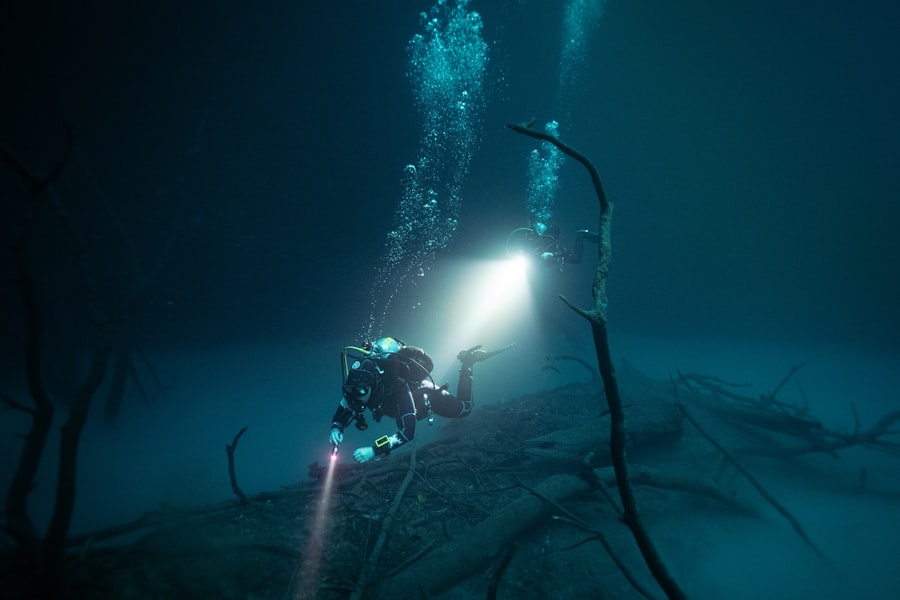The Tic Tac UAP incident has emerged as one of the most compelling cases in the study of unidentified aerial phenomena. This event, which took place in 2004, involved U.S. Navy pilots who encountered an object that defied conventional understanding of flight capabilities.
The object, resembling a Tic Tac mint, exhibited extraordinary speed and maneuverability, leading to widespread intrigue and speculation about its origins. As discussions surrounding UAPs gain momentum, the Tic Tac incident stands out not only for its visual evidence but also for the credibility of the witnesses involved—highly trained military personnel. The significance of the Tic Tac UAP extends beyond mere curiosity; it raises profound questions about national security, technological advancements, and the potential existence of extraterrestrial life.
The Tic Tac incident serves as a focal point for understanding the broader context of UAPs, prompting both scientific inquiry and public fascination.
Key Takeaways
- Tic Tac UAP refers to a specific unidentified aerial phenomenon witnessed by military personnel.
- Unidentified Aerial Phenomena (UAP) have a long history of sightings and reports dating back centuries.
- The Tic Tac UAP incident involved a series of encounters with an unidentified flying object by U.S. Navy pilots in 2004.
- There are potential connections between UAP and underwater activity, with reports of UAP entering and exiting bodies of water.
- Various theories exist regarding the underwater activity of UAP, including potential bases or entrances located beneath the ocean’s surface.
The History of Unidentified Aerial Phenomena (UAP)
The history of unidentified aerial phenomena is rich and complex, dating back centuries. Reports of strange lights and objects in the sky can be traced to ancient civilizations, where they were often interpreted through the lens of mythology and superstition. However, the modern era of UAP sightings began in the mid-20th century, particularly after World War
Throughout the decades, various organizations, including the U.S. Air Force and private research groups, have sought to document and analyze UAP sightings. The Cold War era saw heightened scrutiny as military officials feared that some sightings could be advanced technology from rival nations.
This period marked a shift in how UAPs were perceived—from mere curiosities to potential threats to national security. As more reports emerged, the need for systematic investigation became apparent, laying the groundwork for future studies into these enigmatic phenomena.
The Tic Tac UAP Incident

The Tic Tac UAP incident occurred on November 14, 2004, off the coast of San Diego during a training exercise involving Navy pilots from the USS Nimitz. Two F/A-18 Super Hornet pilots reported encountering an object that appeared to be a white, oval-shaped craft resembling a Tic Tac mint. The object exhibited remarkable agility, performing maneuvers that defied the laws of physics as understood by contemporary aviation technology.
The pilots described how it accelerated rapidly and changed direction with ease, leaving them both astonished and perplexed. The encounter was captured on infrared camera footage, which later became public and sparked widespread debate about the nature of the object. The Pentagon confirmed the authenticity of the footage, further legitimizing the claims made by the pilots.
This incident not only reignited interest in UAPs but also prompted discussions about military preparedness and the need for transparency regarding such encounters. The Tic Tac incident remains a pivotal case study in understanding UAPs and their implications for national security and scientific inquiry.
Underwater Connections to UAP
| Year | Number of Underwater Connections | Related UAP Sightings |
|---|---|---|
| 2018 | 5 | 3 |
| 2019 | 8 | 6 |
| 2020 | 12 | 9 |
| 2021 | 15 | 11 |
The connection between unidentified aerial phenomena and underwater activity has garnered increasing attention in recent years. Many researchers and enthusiasts speculate that some UAPs may originate from or operate in aquatic environments. This theory is supported by numerous reports of UAPs emerging from or disappearing into bodies of water, suggesting a potential link between aerial and underwater phenomena.
Such connections challenge traditional notions of where these objects might come from and how they operate. The ocean covers over 70% of the Earth’s surface, yet much of it remains unexplored and poorly understood. This vast expanse presents an ideal environment for advanced technologies or even extraterrestrial crafts to operate undetected.
The idea that UAPs could be utilizing underwater routes for travel opens up new avenues for investigation and understanding.
Theories on Underwater UAP Activity
Several theories have emerged regarding the potential activity of UAPs in underwater environments. One prominent theory posits that these objects could be utilizing advanced propulsion systems that allow them to navigate both air and water with ease. Such technology would require an understanding of physics that surpasses current human capabilities, leading some to speculate about extraterrestrial origins or advanced human technology hidden from public knowledge.
Another theory suggests that underwater UAPs may be linked to secret military projects or experimental vehicles designed for reconnaissance or surveillance purposes. Given the strategic importance of oceans in global security, it is plausible that nations are developing technologies capable of operating in both domains. This dual capability could provide significant advantages in terms of stealth and operational flexibility, further complicating the landscape of UAP research.
Scientific Research on Underwater UAP

Scientific research into underwater UAP activity is still in its infancy but is gaining traction as interest in the phenomenon grows. Researchers are beginning to employ advanced technologies such as sonar mapping, underwater drones, and remote sensing to investigate potential connections between UAPs and aquatic environments. These tools allow scientists to explore previously inaccessible areas of the ocean while gathering data on unusual sightings reported by military personnel and civilians alike.
Collaborative efforts between oceanographers, aerospace engineers, and ufologists are essential for advancing this field of study. By combining expertise from various disciplines, researchers can develop comprehensive frameworks for understanding how UAPs might interact with underwater ecosystems. This interdisciplinary approach not only enhances scientific inquiry but also fosters a more nuanced understanding of the implications surrounding these phenomena.
Government Investigations and UAP
Government investigations into UAPs have evolved significantly over the years, particularly in response to public demand for transparency and accountability. In recent years, several high-profile reports have been released by government agencies, including the Pentagon’s Unidentified Aerial Phenomena Task Force (UAPTF). These reports aim to assess potential threats posed by UAPs while providing insights into their nature and origins.
The establishment of formal investigations reflects a growing recognition that UAPs warrant serious consideration within national security frameworks. As governments around the world begin to acknowledge the reality of these phenomena, there is an increasing push for collaboration between military entities and scientific communities. This partnership could lead to more rigorous research efforts and a better understanding of both aerial and underwater UAP activity.
Potential Implications of Underwater UAP
The implications of underwater UAP activity are vast and multifaceted. If these phenomena are indeed linked to advanced technologies or extraterrestrial origins, they could challenge existing paradigms in science, technology, and even philosophy. The existence of such entities would prompt profound questions about humanity’s place in the universe and our understanding of life beyond Earth.
Moreover, if underwater UAPs are tied to military operations or surveillance activities, their presence could have significant geopolitical ramifications. Nations may need to reassess their defense strategies in light of potential threats posed by these unidentified objects operating beneath the waves. Understanding their capabilities could lead to new developments in naval warfare and defense technologies, reshaping global power dynamics.
The Role of Technology in UAP Detection
Technology plays a crucial role in detecting and analyzing unidentified aerial phenomena. Advances in radar systems, infrared imaging, and satellite surveillance have enhanced our ability to monitor airspace and identify unusual objects. These technologies enable military personnel and researchers to gather data on UAP sightings with greater accuracy than ever before.
In addition to traditional detection methods, emerging technologies such as artificial intelligence (AI) are being employed to analyze vast amounts of data collected from various sources. AI algorithms can identify patterns and anomalies that may indicate UAP activity, streamlining the investigative process. As technology continues to evolve, it holds promise for uncovering new insights into the nature of these enigmatic phenomena.
Environmental Impact of Underwater UAP
The environmental impact of underwater UAP activity is an area that warrants careful consideration. If these objects are indeed operating within marine ecosystems, their presence could disrupt local wildlife or contribute to ecological changes. Understanding how these phenomena interact with their surroundings is essential for assessing potential risks to biodiversity and ocean health.
Furthermore, if advanced technologies are being utilized by underwater UAPs, there may be implications for oceanic resources and conservation efforts. Researchers must consider how these activities might affect marine habitats and what measures can be taken to mitigate any negative consequences. As investigations into underwater UAPs progress, environmental stewardship should remain a priority.
The Future of UAP Research
The future of UAP research is poised for significant developments as interest continues to grow among scientists, governments, and the public alike. With increasing collaboration between military entities and academic institutions, there is potential for groundbreaking discoveries that could reshape our understanding of both aerial and underwater phenomena. As technology advances, researchers will have access to more sophisticated tools for investigation, enabling deeper exploration into these mysterious occurrences.
Moreover, as societal attitudes toward UAPs evolve from skepticism to curiosity, public engagement will play a vital role in shaping future research agendas. Citizen scientists and enthusiasts can contribute valuable observations and data that complement formal investigations conducted by government agencies. Ultimately, the pursuit of knowledge surrounding UAPs will require an open-minded approach that embraces interdisciplinary collaboration while remaining grounded in scientific rigor.
In conclusion, the Tic Tac UAP incident serves as a catalyst for broader discussions about unidentified aerial phenomena and their potential connections to underwater activity. As research continues to unfold, it promises to unveil new insights into one of humanity’s most enduring mysteries—our quest to understand what lies beyond our world.
In recent years, the mystery surrounding Unidentified Aerial Phenomena (UAP) has deepened with intriguing reports of their potential underwater connections. These phenomena, often observed moving seamlessly between air and water, have sparked significant interest and speculation. A related article on this topic can be found on X File Findings, which delves into the possible underwater capabilities of UAPs and their implications for our understanding of these enigmatic objects. For more detailed insights, you can read the full article by visiting this link.
WATCH THIS! 550 Knots Underwater Should Not Be Possible
FAQs
What is a Tic Tac UAP?
A Tic Tac UAP, or Unidentified Aerial Phenomenon, is a term used to describe unidentified objects observed in the sky that exhibit flight characteristics beyond the capabilities of known human-made aircraft.
What is the connection between Tic Tac UAP and underwater phenomena?
There have been reports of Tic Tac UAPs exhibiting behavior that suggests a potential connection to underwater phenomena, such as entering and exiting the ocean at high speeds.
What evidence supports the connection between Tic Tac UAP and underwater activity?
Eyewitness accounts from military personnel and radar data have provided evidence of Tic Tac UAPs exhibiting rapid and unconventional movements near the ocean’s surface, suggesting a potential link to underwater activity.
What are some theories about the underwater connection of Tic Tac UAPs?
Some theories suggest that Tic Tac UAPs may have the ability to travel seamlessly between the air and underwater environments, leading to speculation about advanced propulsion systems or even the existence of underwater bases or vehicles.
What is the significance of the underwater connection of Tic Tac UAPs?
The potential connection between Tic Tac UAPs and underwater activity has sparked interest in understanding the capabilities and origins of these unidentified objects, as well as the potential implications for underwater exploration and national security.
